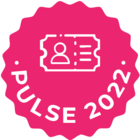Introduction
Defining and automating lifecycle stages gives your team a solid foundation for managing customer journeys, but to keep these journeys effective, you need a process for continuous improvement. Monitoring and optimizing lifecycle performance allow you to ensure that customers progress smoothly and that any friction points are addressed before they impact satisfaction. This article will guide you through monitoring lifecycle performance and using data-driven insights to make continuous improvements, creating a journey that adapts seamlessly to both customer and business needs.
Step 1: Track Key Metrics for Each Lifecycle Stage
The first step to optimizing lifecycle performance is understanding how each stage is functioning. Key metrics provide insight into stage efficiency and highlight areas needing improvement.
-
Onboarding Completion Rate: Track the percentage of customers who complete onboarding within a specified timeframe. A low completion rate can signal bottlenecks or insufficient guidance. Use Dashboards to monitor completion rates in real-time, allowing CSMs to step in as needed.
-
Adoption Health and Feature Usage: Measure feature engagement and depth of usage in the Adoption stage. Adoption Explorer helps you track key usage metrics, providing insights into whether customers are fully utilizing available features.
-
Time in Stage: Monitor the duration customers spend in each stage. Long durations may indicate stagnation or potential disengagement. Use Scorecards to track time spent in each lifecycle stage, enabling proactive intervention if customers are not progressing.
Step 2: Identify and Address Stage-Specific Bottlenecks
After monitoring stage performance, identify any bottlenecks or delays and take targeted actions to resolve them. By addressing issues at each stage, you can help keep customers on track toward renewal and long-term success.
-
Automate Alerts for Delayed Progression: Set up automated CTAs for customers who remain in a particular stage longer than expected. For instance, if a customer is still in Onboarding after 30 days, the Rules Engine can trigger a CTA to alert CSMs to provide additional guidance. Configure these alerts using Rules Engine to ensure timely intervention.
-
Customize Engagement Based on Bottleneck Data: If you identify frequent adoption challenges in a particular segment, consider modifying engagement tactics. Use Journey Orchestrator to deliver tailored guidance or feature prompts to customers in segments where delays commonly occur.
-
Analyze Feature Gaps: In the Adoption stage, if customers consistently struggle with certain features, it may indicate a feature usability issue. Use data from Adoption Explorer to identify underutilized features and coordinate with the Product team to address potential usability gaps.
Step 3: Refine Lifecycle Stages Based on Performance Data
Continuously refining lifecycle stages based on real-time performance insights helps your team stay responsive to changing customer needs and engagement patterns.
-
Adjust Transition Criteria Based on Data Trends: If you observe that certain customers are advancing through stages too quickly or slowly, consider refining transition criteria. For instance, if low-engagement customers are moving into Renewal prematurely, adjust the health score thresholds or feature usage requirements in Scorecards to better align with desired progression.
-
Gather CSM and Customer Feedback: Regularly collect feedback from both CSMs and customers to understand how well each stage is serving their needs. Use Surveys to gather customer input on onboarding and feature adoption experiences. CSM feedback can provide valuable insights into whether additional resources are needed at specific stages.
-
Update Playbooks and Automation Rules: Based on the data and feedback, update playbooks or automation rules to address recurring issues. For example, if customers are frequently stagnating in the Adoption stage, create a playbook focused on re-engagement strategies and adjust automation to ensure early identification of adoption challenges using Playbooks.
Next Steps for Success
With a robust monitoring and optimization framework in place, your team can ensure customers move seamlessly through each stage. Continue to refine metrics, adjust engagement tactics, and update transition criteria based on data trends to maintain a customer journey that’s responsive to evolving needs.
Explore More:
